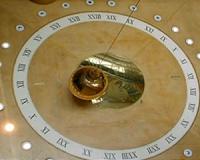| . |  |
. |
Paris, France (SPX) Nov 15, 2010 The international scientific community has identified five Grand Challenges that, if addressed in the next decade, will deliver knowledge to enable sustainable development, poverty eradication, and environmental protection in the face of global change. The Grand Challenges for Earth system science are the result of broad consultation as part of a visioning process spearheaded by the International Council for Science (ICSU) in cooperation with the International Social Science Council (ISSC). The consultation highlighted the need for research that integrates our understanding of the functioning of the Earth system-and its critical thresholds-with global environmental change and socio-economic development. The five Grand Challenges are: 1. Forecasting-Improve the usefulness of forecasts of future environmental conditions and their consequences for people. 2. Observing-Develop, enhance and integrate the observation systems needed to manage global and regional environmental change. 3. Confining-Determine how to anticipate, recognize, avoid and manage disruptive global environmental change. 4. Responding-Determine what institutional, economic and behavioural changes can enable effective steps toward global sustainability. 5. Innovating-Encourage innovation (coupled with sound mechanisms for evaluation) in developing technological, policy and social responses to achieve global sustainability. 'The challenges are a consensus list of the highest priorities for Earth system research and provide an overarching research framework. If we, the scientific community, successfully address these in the next decade, we will remove critical barriers impeding progress toward sustainable development,' said Dr Walt Reid, who chaired the Task Team overseeing the first step of the visioning process. 'Addressing these challenges will require new research capacity, especially the involvement of young scientists and scientists from developing countries, and a balanced mix of disciplinary and interdisciplinary research that actively involves stakeholders and decision makers,' Dr Reid continued. 'The existing global environmental change programmes-Diversitas, International Geosphere Biosphere Programme, International Human Dimensions Programme and the World Climate Research Programme-along with the Earth System Science Partnership have played an important role in our understanding of the Earth system,' explained Professor Johan Rockstrom, the current chair of the visioning Task Team. 'Their engagement has been an important part of the visioning process and the continued involvement of these global research networks is essential to the globally coordinated research effort needed to address the questions posed by the Grand Challenges,' Professor Rockstrom said. Now that the research framework has been identified the next step has begun: determining the organizational structure required to implement this framework. Professor Deliang Chen, ICSU Executive Director, said: 'A lot of integrated research is already happening but it does not constitute the concerted coordinated global effort that is needed to effectively respond to the Grand Challenges. ICSU, together with the ISSC and the Belmont Forum of funders, are consulting with the existing programmes and related initiatives to determine what new structure(s) will be required.' 'The new structure(s) will need to deliver the science to answer the Grand Challenges more rapidly and more effectively than is likely to happen with the current arrangements,' Professor Chen concluded.
Share This Article With Planet Earth
Related Links International Council for Science Dirt, rocks and all the stuff we stand on firmly
 Bringing Foucault Down To Size
Bringing Foucault Down To SizeWashington DC (SPX) Nov 12, 2010 Walk into nearly any science museum worth its salt and you're likely to see a Foucault pendulum, a simple but impressive device for observing the Earth's rotation. Such pendulums have been around for more than 150 years, and little about how they work remains a mystery today. The only problem, according to Argentinean researcher Horacio Salva, is that the devices are generally large and un ... read more |
|
| The content herein, unless otherwise known to be public domain, are Copyright 1995-2010 - SpaceDaily. AFP and UPI Wire Stories are copyright Agence France-Presse and United Press International. ESA Portal Reports are copyright European Space Agency. All NASA sourced material is public domain. Additional copyrights may apply in whole or part to other bona fide parties. Advertising does not imply endorsement,agreement or approval of any opinions, statements or information provided by SpaceDaily on any Web page published or hosted by SpaceDaily. Privacy Statement |